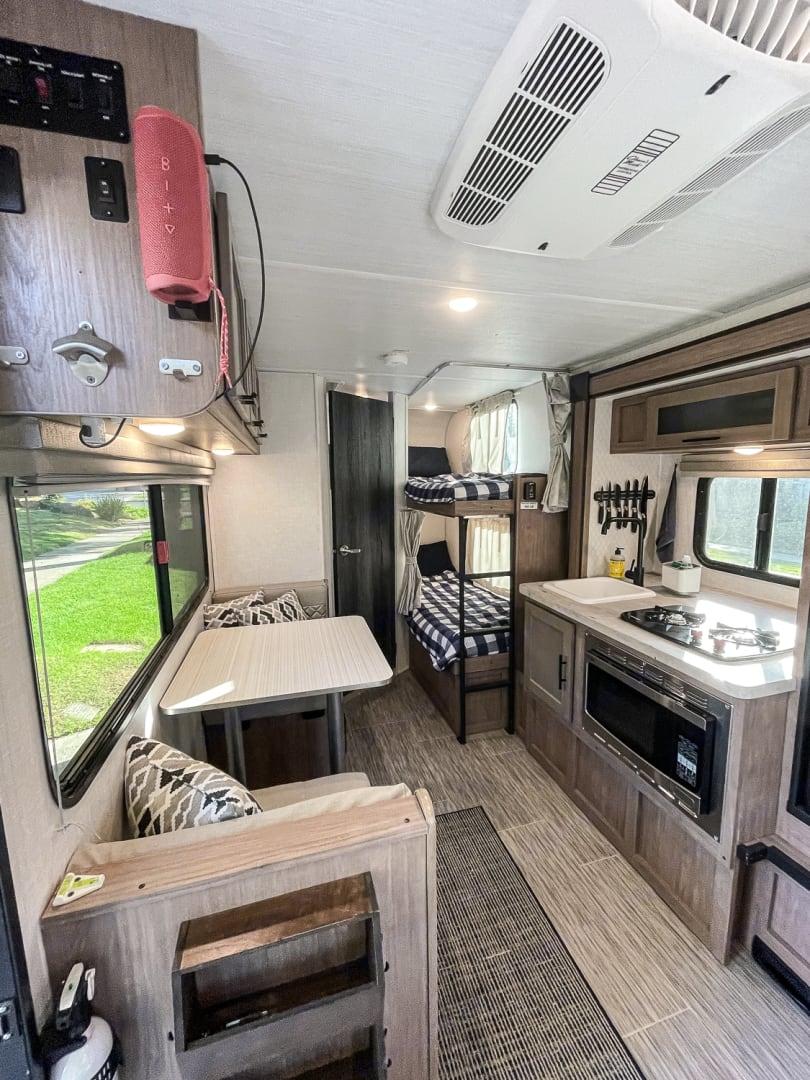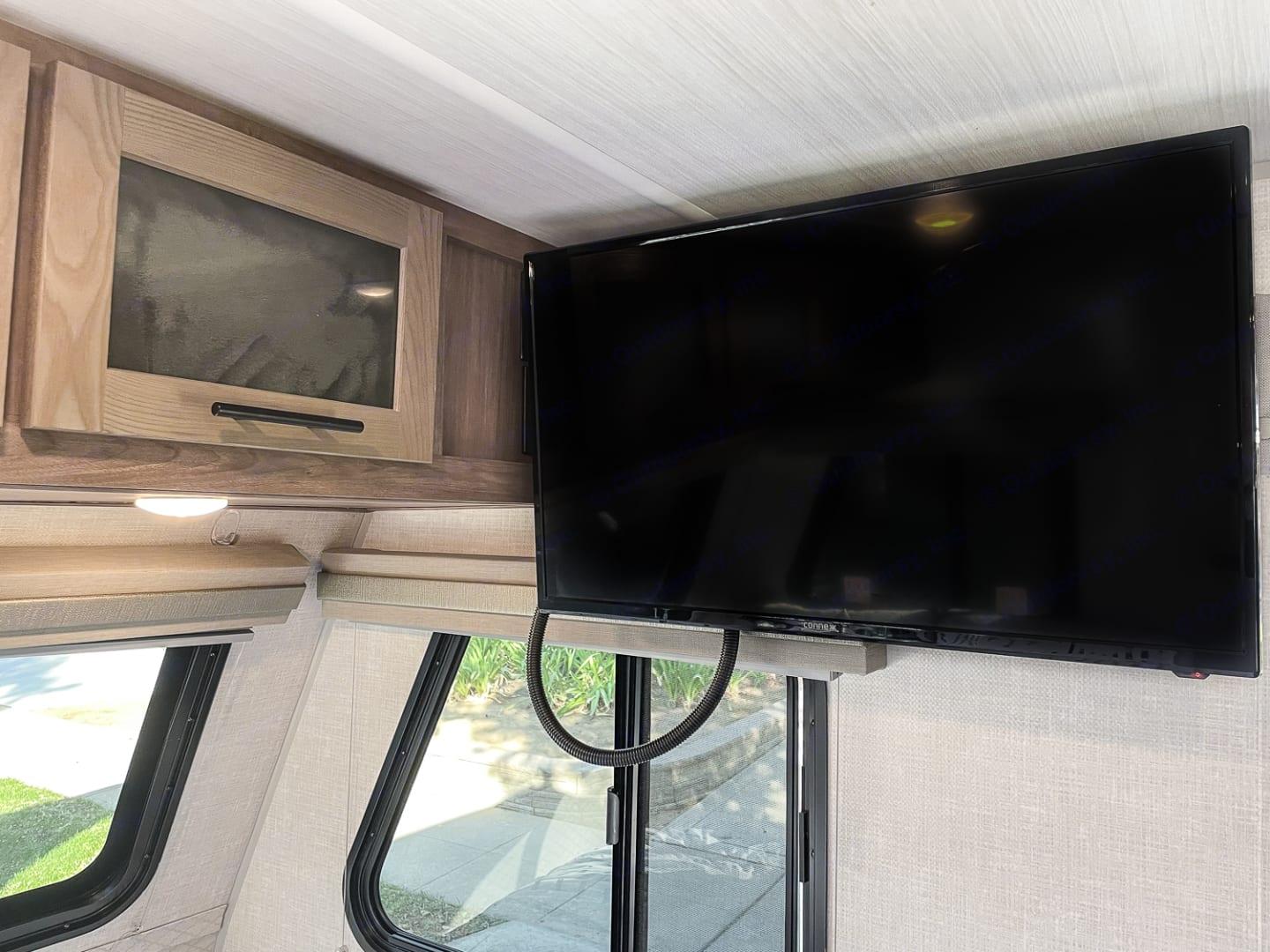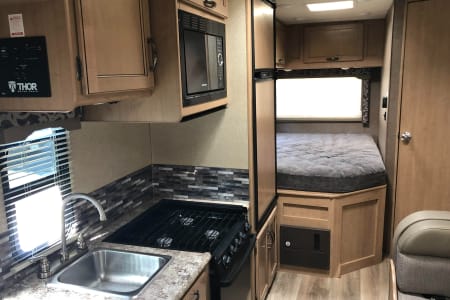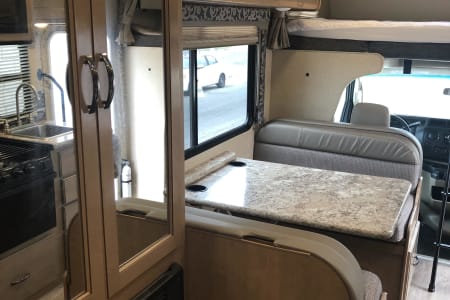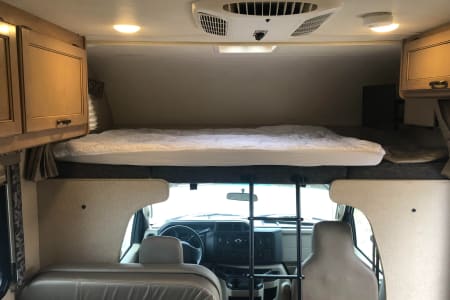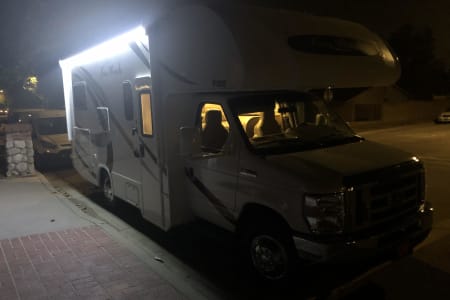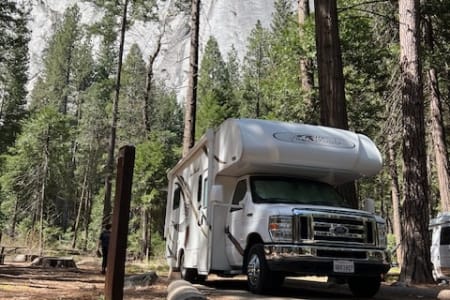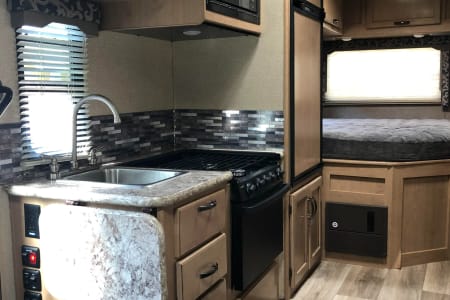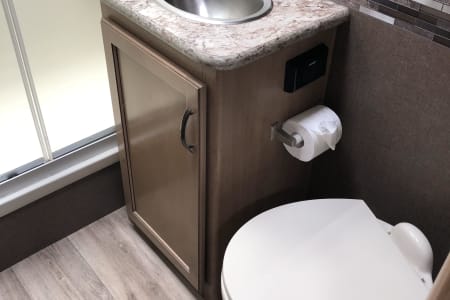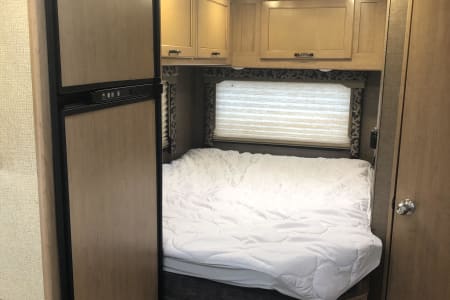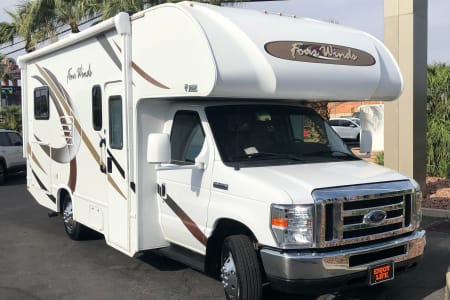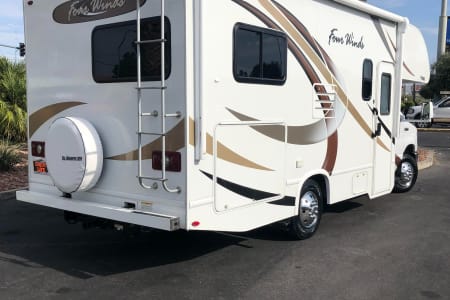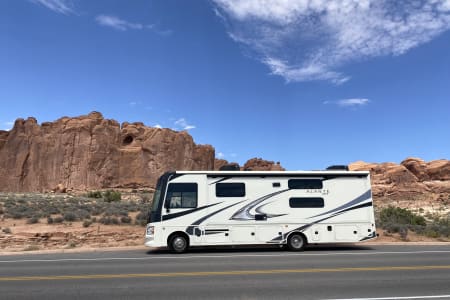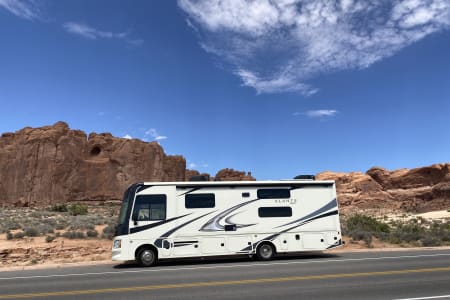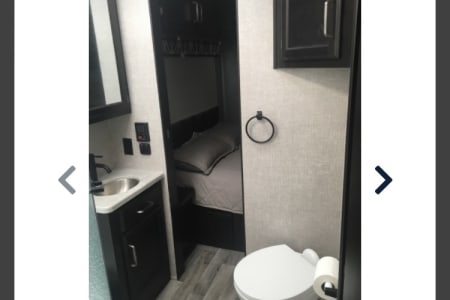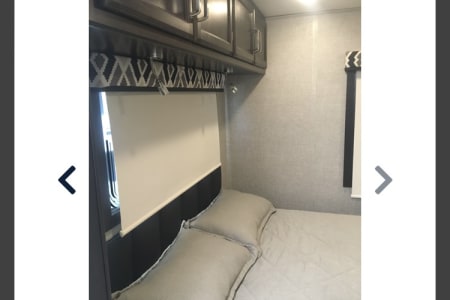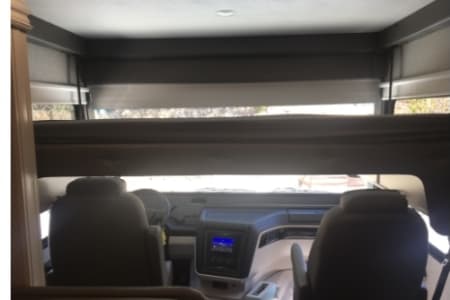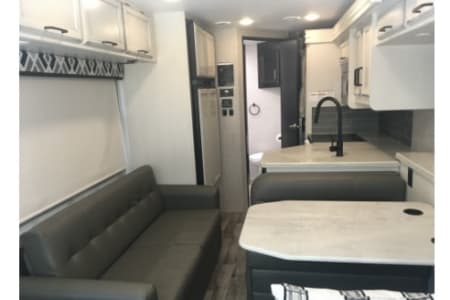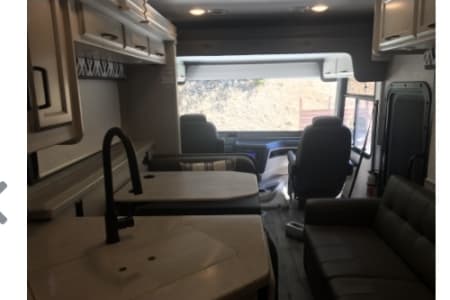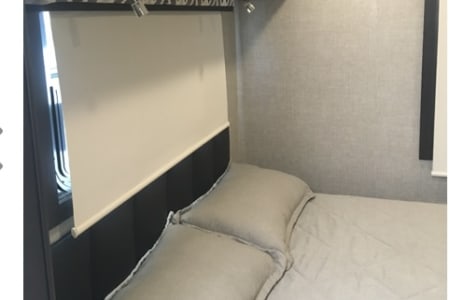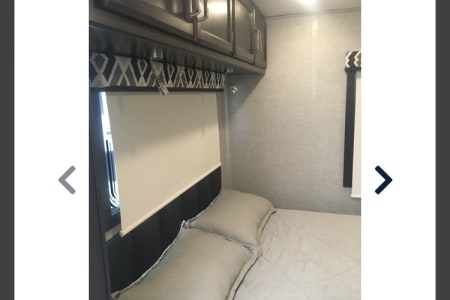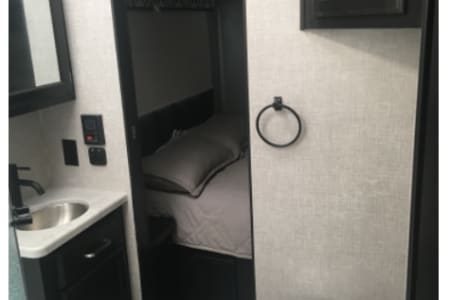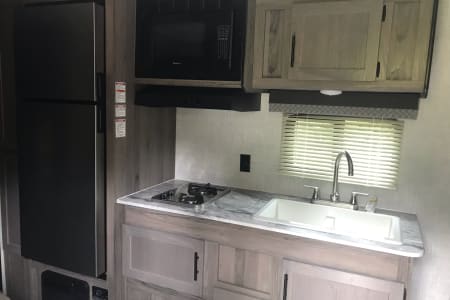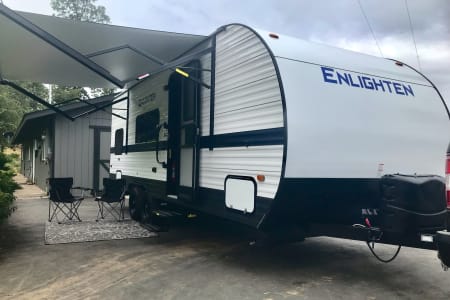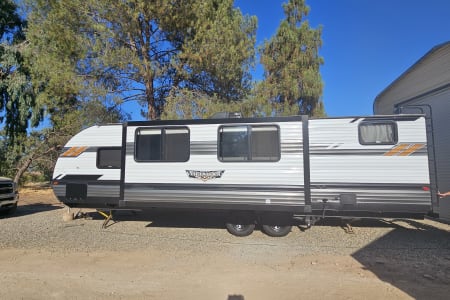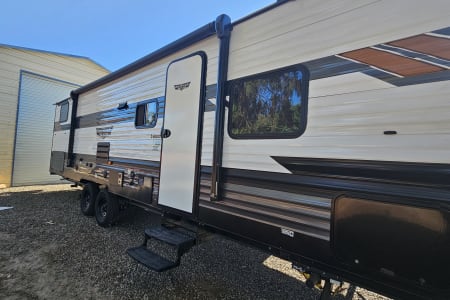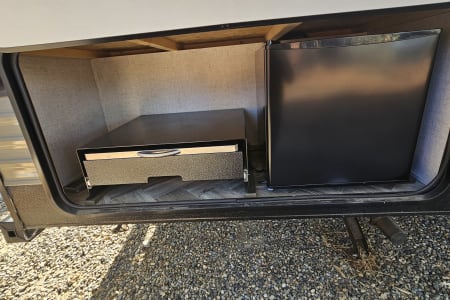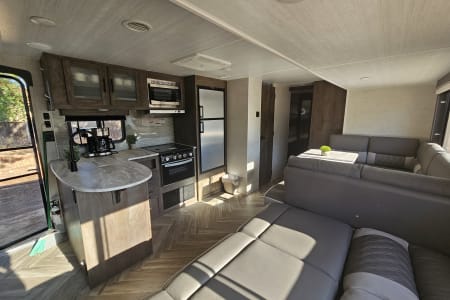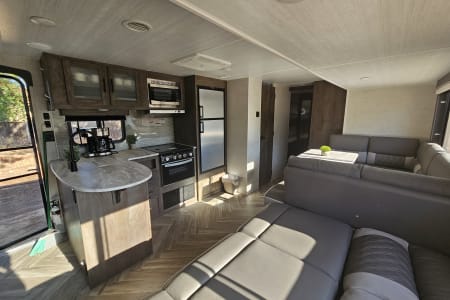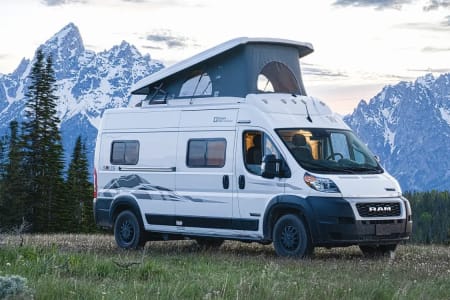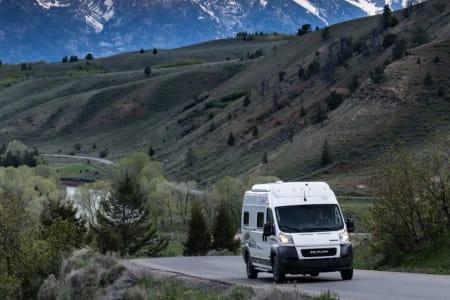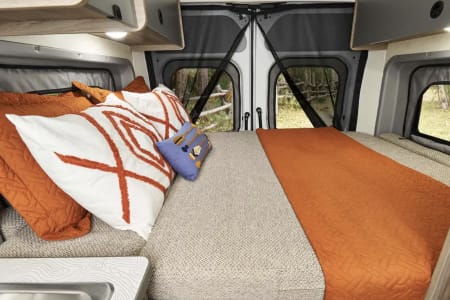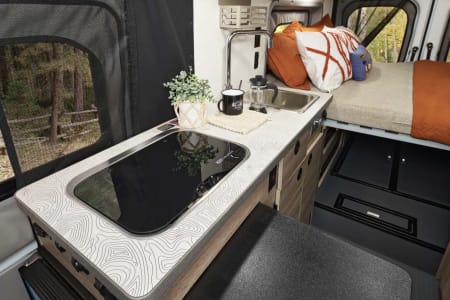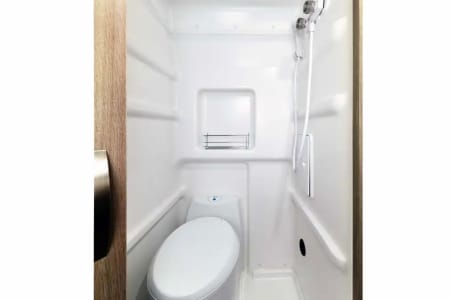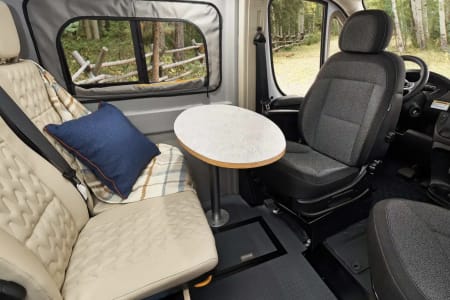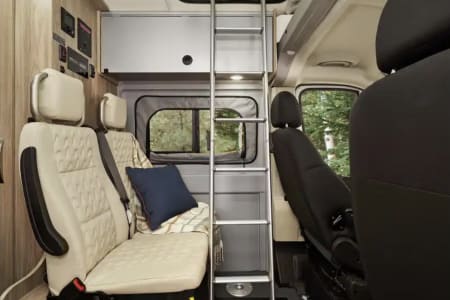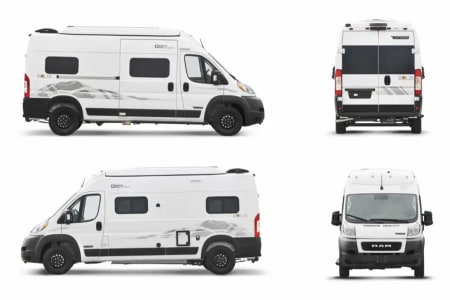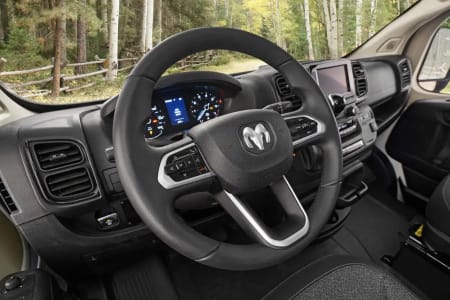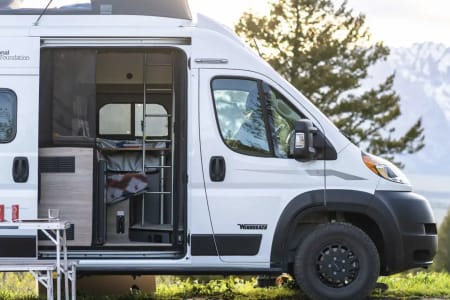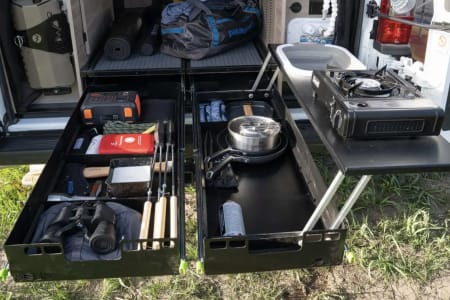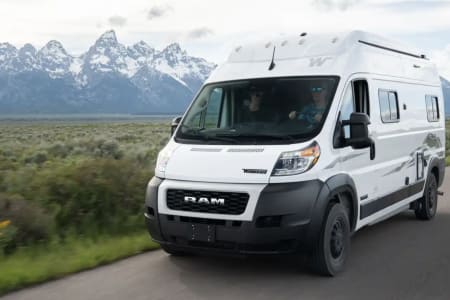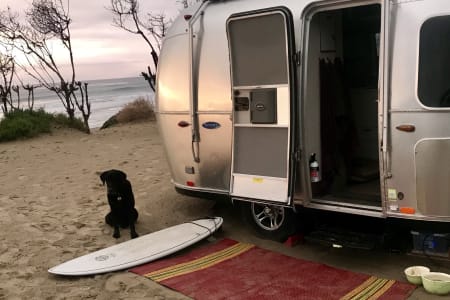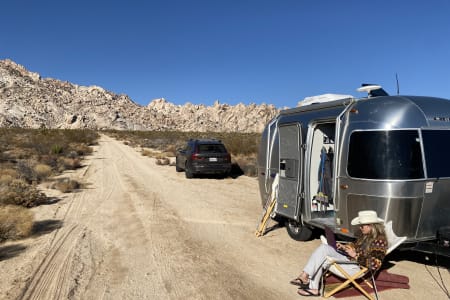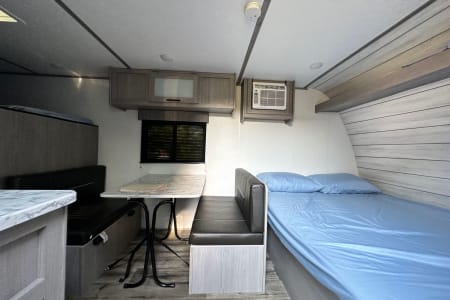Yosemite National Park California (CA) RV Rentals
RV Rentals Dates
Home / National & State Park Guides / National Park / Yosemite National Park
Looking for RV rentals, camper van rentals or travel trailer rentals near Yosemite National Park?
Introduction
Yosemite National Park is a dream destination for RV camping enthusiasts. Its stunning natural beauty, rich history, and abundance of recreational activities make it a perfect spot for outdoor adventures. Yosemite National Park holds great cultural and historical significance. Native American tribes, such as the Ahwahneechee, have lived in the Yosemite Valley for thousands of years. For Yosemite National Park camper rentals, check authorized vendors like Yosemite RV Rentals or local rental agencies for options and availability. The park also played a crucial role in the development of the conservation movement, with figures like John Muir advocating for its protection. Today, Yosemite is recognized as a UNESCO World Heritage site and continues to inspire visitors with its awe-inspiring landscapes. The unique features of Yosemite National Park can be attributed to natural occurrences over millions of years. Glaciers sculpted the iconic granite cliffs, valleys, and waterfalls that define the park’s landscape. The result is a breathtaking combination of towering peaks, deep valleys, and cascading waterfalls that draw visitors from around the world. RVThereYet is an RV rental company, offering a diverse fleet of motorhomes, including Class A, Class B, and Class C Rentals, Travel, Trailers, and Motorhomes for unforgettable adventures in scenic RV parks and campsites in Yosemite National Park. Ensure early reservations for camper rentals at Yosemite National Park.
RV Rentals in Yosemite National Park
Coupon Code: RVTHEREYET - 10% Off
Coupon Code: RVTHEREYET - 10% Off
Coupon Code: RVTHEREYET - 10% Off
Coupon Code: RVTHEREYET - 10% Off
Coupon Code: RVTHEREYET - 10% Off
Coupon Code: RVTHEREYET - 10% Off
Coupon Code: RVTHEREYET - 10% Off
Coupon Code: RVTHEREYET - 10% Off
Transportation
-
Driving/Transportation
When visiting Yosemite National Park private vehicles are the most convenient mode of transportation. There are four main entrances to the park the Arch Rock Entrance the South Entrance the Big Oak Flat Entrance and the Tioga Pass Entrance. Visitors can access the park through any of these entrances depending on their starting location. It’s important to note that there are restrictions on rig sizes within the park with maximum vehicle lengths ranging from 25 to 45 feet depending on the specific campground or parking area. RVers should check the park’s website for detailed information on vehicle size restrictions to ensure a smooth and hassle-free visit.
-
Parking area
Yosemite National Park provides designated RV parking areas throughout the park making it convenient for RVers to explore its wonders. However overnight parking outside of designated campsites is not allowed. It is highly recommended to camp with an RV in the park as it allows for a more immersive experience and easy access to the park’s attractions. While alternative transportation methods like shuttles and bicycles are available within the park having an RV provides flexibility and the freedom to explore at your own pace.
-
Public Transportation
Yosemite National Park offers a free shuttle bus system that operates within the park providing convenient transportation to popular destinations. The shuttle buses run on various routes allowing visitors to easily access trailheads visitor centers and other points of interest. Additionally there are numerous walking paths throughout the park providing scenic routes for exploring on foot. These options make it easy to navigate and enjoy the beauty of Yosemite National Park without relying solely on private vehicles.
Top Campsites in Yosemite National Park
-
Reservations camping
Located within Yosemite Valley Upper Pines Campground is the most popular campsite in the area. It offers 238 sites for tents RVs and trailers up to 35 feet in length. Amenities include picnic tables fire rings and access to drinking water and restrooms. The campground is pet-friendly allowing leashed pets. Open year-round it provides easy access to hiking trails scenic viewpoints and popular attractions like Yosemite Falls and Half Dome.
Situated in Yosemite Valley Lower Pines Campground is another highly sought-after camping spot. It features 60 sites suitable for tents RVs and trailers up to 35 feet long. The campground offers picnic tables fire rings and access to drinking water and restrooms. It is pet-friendly allowing leashed pets. Open from spring to fall Lower Pines Campground provides a convenient location near the Merced River and is within walking distance of popular sights like Yosemite Village.
Located in Yosemite Valley North Pines Campground is a scenic camping option. It has 81 sites for tents RVs and trailers up to 40 feet in length. Amenities include picnic tables fire rings and access to drinking water and restrooms. The campground is pet-friendly allowing leashed pets. Open from spring to fall North Pines Campground offers a peaceful setting near the Merced River with easy access to hiking trails and attractions like Mirror Lake and Half Dome.
Situated in the southern part of Yosemite National Park Wawona Campground is a serene retreat. It offers 93 sites suitable for tents RVs and trailers up to 35 feet long. Amenities include picnic tables fire rings and access to drinking water and restrooms. The campground is pet-friendly allowing leashed pets. Open from spring to fall Wawona Campground provides a tranquil setting near the South Fork of the Merced River with proximity to attractions like Mariposa Grove and the Wawona Golf Course. These popular campsites near Yosemite National Park require reservations due to their high demand. They offer a range of amenities and activities allowing visitors to immerse themselves in the beauty of the park while enjoying a comfortable camping experience.Upper Pines Campground
Lower Pines Campground
North Pines Campground
Wawona Campground
-
First-come first-served
Camp 4 is a popular first-come-first-served campground located in Yosemite Valley. It offers 36 sites for tents only and is open year-round. The campground is known for its rock climbing community and is a favorite among climbers. Camp 4 can accommodate small RVs and trailers up to 25 feet in length. However it’s important to note that there are no hookups available. The campground is pet-friendly allowing leashed pets. As a first-come-first-served campground it’s advisable to arrive early to secure a spot especially during peak seasons.
Bridalveil Creek Campground is a serene first-come-first-served campground located near Glacier Point Road. It offers 110 sites suitable for tents RVs and trailers up to 35 feet in length. The campground is open from summer to fall and provides a peaceful setting surrounded by towering trees. Amenities include picnic tables fire rings and access to drinking water and restrooms. Bridalveil Creek Campground is pet-friendly allowing leashed pets. Due to its popularity arriving early in the day is recommended to secure a site.
Tamarack Flat Campground is a secluded first-come-first-served campground located along Tioga Road. It offers 52 sites suitable for tents RVs and trailers up to 35 feet in length. The campground is open from summer to fall and provides a peaceful escape away from the crowds. Amenities include picnic tables fire rings and access to drinking water and vault toilets. Tamarack Flat Campground is pet-friendly allowing leashed pets. As a first-come-first-served campground it’s advisable to arrive early especially during weekends and holidays as sites tend to fill up quickly. These first-come-first-served campgrounds in Yosemite National Park offer a chance to secure a camping spot without a reservation. However it’s important to plan accordingly and arrive early to increase the chances of finding an available site during peak seasons.Camp 4
Bridalveil Creek Campground
Tamarack Flat Campground
-
Alternate camping
If campsites inside Yosemite National Park are full RV renters have the option of staying at private campgrounds located near the park. These campgrounds often offer a range of amenities including full hookups showers laundry facilities and recreational activities. Some popular private campgrounds near Yosemite include Yosemite Pines RV Resort and Family Lodging Indian Flat RV Park and Yosemite Lakes RV Resort. These campgrounds provide a convenient base for exploring the park with varying levels of proximity and amenities to suit different preferences.
For those seeking a more adventurous camping experience backcountry camping is an option near Yosemite National Park. The Inyo National Forest and Sierra National Forest which border the park offer backcountry camping opportunities. RV renters can find dispersed camping sites or designated campgrounds within these national forests. It’s important to note that backcountry camping requires permits and adherence to Leave No Trace principles. Additionally RVers should ensure their vehicle is suitable for navigating forest roads and accessing remote camping areas. These alternative camping options near Yosemite National Park provide RV renters with flexibility when campsites inside the park are full. Whether opting for private campgrounds with amenities or venturing into the backcountry for a more rugged experience there are options available to accommodate different preferences and ensure an enjoyable camping experience near this iconic national park.Private Campgrounds
Backcountry Camping
-
General activities
Hiking is the most popular activity in Yosemite National Park with trails catering to all levels of experience. From the iconic Mist Trail leading to Vernal and Nevada Falls to the challenging Half Dome hike there is something for everyone. Hikers can explore the breathtaking Yosemite Valley marvel at towering granite cliffs and witness the park’s stunning waterfalls. Don’t forget to pack water snacks and appropriate hiking gear.
Biking is a fantastic way to explore Yosemite’s scenic wonders. The park offers paved and unpaved trails suitable for both mountain biking and leisurely rides. The Yosemite Valley Bike Path provides a picturesque route along the valley floor while the Glacier Point Road offers a thrilling downhill ride. Cyclists can enjoy stunning views of meadows forests and granite formations as they pedal through the park.
Fishing enthusiasts will find plenty of opportunities to cast their lines in Yosemite’s rivers and lakes. The Merced River and Tenaya Lake are popular spots for trout fishing while the Tuolumne River offers excellent fly fishing. Anglers can expect to catch rainbow brown and brook trout. Fishing is subject to regulations and a valid California fishing license is required.
Yosemite is a world-renowned destination for rock climbing attracting climbers from all over the globe. The park’s granite walls such as El Capitan and Half Dome offer challenging routes for experienced climbers. Beginners can also find suitable climbs at locations like Swan Slab and Church Bowl. Whether you’re a seasoned climber or a beginner looking to try your hand at this thrilling sport Yosemite’s vertical playground will not disappoint.
Yosemite National Park is home to a diverse range of wildlife making it a paradise for wildlife enthusiasts. Visitors can spot black bears mule deer coyotes and a variety of bird species throughout the park. The meadows and forests provide excellent opportunities for wildlife viewing and photography. Remember to maintain a safe distance and never feed or approach the animals. These top recreational activities in Yosemite National Park offer RV campers a chance to immerse themselves in the park’s natural beauty and enjoy unforgettable outdoor adventures. Whether hiking to iconic waterfalls cycling through scenic trails casting a line for trout scaling granite walls or observing wildlife in their natural habitat there is no shortage of excitement and exploration in this stunning national park.Hiking
Biking
Fishing
Rock Climbing
Wildlife Viewing
-
Alternative activities
For RV campers who prefer a more relaxed approach sightseeing in Yosemite National Park is a must. The park is filled with iconic landmarks and breathtaking vistas that can be enjoyed from the comfort of your vehicle or through short walks from parking areas. Highlights include Tunnel View where visitors can take in a panoramic view of Yosemite Valley and Glacier Point offering stunning vistas of Half Dome and the surrounding mountains. Don’t forget to bring your camera to capture these incredible sights.
Yosemite National Park is a haven for nature enthusiasts providing ample opportunities for observing wildlife and immersing oneself in the park’s natural beauty. RV campers can take leisurely walks along meadows and forested areas keeping an eye out for deer squirrels and an array of bird species. The park’s meadows such as Tuolumne Meadows and Cook’s Meadow are particularly popular for nature watching. Remember to maintain a respectful distance and avoid feeding or approaching the animals.
Yosemite’s awe-inspiring landscapes make it a paradise for photography enthusiasts. From the towering granite cliffs to the cascading waterfalls and serene meadows there are endless opportunities to capture stunning images. Iconic photo spots include Tunnel View where you can frame the valley with El Capitan and Bridalveil Fall and Valley View offering a picturesque reflection of the valley in the Merced River. Sunrise and sunset are particularly magical times to capture the park’s beauty.
Mariposa Grove is a must-visit destination for RV campers seeking a unique and serene experience. Located in the southern part of the park it is home to over 500 mature giant sequoia trees including the famous Grizzly Giant and California Tunnel Tree. Visitors can stroll along the designated trails marveling at the sheer size and grandeur of these ancient trees. The grove provides a peaceful and enchanting atmosphere perfect for a leisurely walk or a picnic amidst nature’s giants.
Yosemite National Park offers numerous spots that are perfect for capturing Instagram-worthy photos. From the iconic Tunnel View to the picturesque reflections at Mirror Lake there are plenty of locations that will make your followers envious. Other popular spots include the picturesque Yosemite Falls the serene Tenaya Lake and the towering granite walls of El Capitan. Don’t forget to use hashtags like #YosemiteNationalPark and #NatureLovers to share your stunning photos with the world. These alternative recreational activities in Yosemite National Park cater to RV campers who prefer a more relaxed and leisurely experience. Whether sightseeing observing nature capturing stunning photographs exploring Mariposa Grove or seeking Instagram-worthy spots there are plenty of options to enjoy the park’s beauty at a more relaxed pace.Sightseeing
Nature Watching
Photography
Mariposa Grove
Instagram Worthy Photo Opportunities
Season-specific experiences in Yosemite National Park
-
Spring activities
Spring brings a burst of color to Yosemite National Park as wildflowers bloom in full glory. The park’s meadows and valleys such as Tuolumne Meadows and Yosemite Valley transform into vibrant tapestries of lupines poppies and other wildflower species. Take a leisurely stroll along the designated trails and immerse yourself in the beauty of nature’s floral display. Keep your camera handy to capture the stunning scenery. Remember to tread lightly and leave the flowers undisturbed for others to enjoy. (location Tuolumne Meadows Yosemite Valley)
Yosemite National Park is rich in history and spring is the perfect time to explore its historical landmarks. Visit the Yosemite Valley Museum to learn about the park’s indigenous people and early settlers. The Ahwahnee Hotel a National Historic Landmark offers a glimpse into the park’s architectural heritage. The Pioneer Yosemite History Center showcases historic buildings and artifacts from the park’s past. Immerse yourself in the stories and heritage that shaped Yosemite National Park. (location Yosemite Valley)
Spring is the prime time to witness the park’s majestic waterfalls in their full glory. Yosemite Falls the tallest waterfall in North America is a must-see. The misty spray and thunderous sound create a truly awe-inspiring experience. Bridalveil Fall with its delicate veil-like cascade is another popular attraction. Other notable waterfalls include Vernal Fall and Nevada Fall accessible via the Mist Trail. Witnessing these magnificent waterfalls in spring is an unforgettable experience. (location Yosemite Valley)
Springtime in Yosemite National Park offers endless opportunities for photography enthusiasts. The lush green meadows blooming wildflowers and gushing waterfalls create a picturesque backdrop for capturing stunning images. Sunrise and sunset provide magical lighting conditions for capturing the park’s beauty. Iconic photo spots like Tunnel View and Glacier Point offer breathtaking vistas. Don’t forget to explore lesser-known areas and seek unique perspectives to capture the essence of Yosemite in spring. (various locations throughout the park)
Spring is a fantastic time for birdwatching in Yosemite National Park as migratory birds return and nesting activity begins. Grab your binoculars and head to areas like Tuolumne Meadows and Yosemite Valley where you can spot a variety of bird species. Look out for the American Dipper Steller’s Jay and Western Tanager. The park’s diverse habitats provide a haven for avian life making it a paradise for bird enthusiasts. (location Tuolumne Meadows Yosemite Valley) These recreational activities and landmarks in Yosemite National Park during the spring offer RV campers a chance to witness the park’s natural beauty historical significance and seasonal wonders. From vibrant wildflowers and historical landmarks to awe-inspiring waterfalls and birdwatching opportunities there is something for everyone to enjoy during this magical season.Wildflower Viewing
Historical Landmarks
Waterfall Viewing
Photography
Birdwatching
-
Summer activities
Summer is the perfect time to experience camping in Yosemite National Park. With numerous campgrounds to choose from RV campers can immerse themselves in the park’s natural beauty and enjoy the serenity of sleeping under the stars. Wake up to the sounds of birds chirping go for a morning hike and spend the evenings around a campfire. Whether you prefer a developed campground with amenities or a more rustic backcountry experience camping in Yosemite during the summer is a memorable adventure.
Beat the summer heat by enjoying water activities in Yosemite’s lakes and rivers. Rent a kayak canoe or paddleboard and explore the calm waters of Tenaya Lake or the Merced River. Swimming is also permitted in designated areas such as the sandy shores of the Merced River in Yosemite Valley. Cool off and create lasting memories as you enjoy the refreshing waters amidst the stunning natural surroundings.
Summer is an ideal time to embark on scenic drives within Yosemite National Park. Tioga Road a high-elevation highway offers breathtaking views of alpine meadows granite peaks and glacial lakes. Glacier Point Road provides access to the iconic Glacier Point viewpoint offering panoramic vistas of Yosemite Valley and the surrounding mountains. Take your time to admire the stunning landscapes and make frequent stops to capture the beauty of Yosemite from the comfort of your RV.
Joining ranger programs is a popular activity for RV campers in Yosemite during the summer. The park offers a variety of educational programs guided hikes and campfire talks led by knowledgeable rangers. Learn about the park’s geology wildlife and history while gaining a deeper appreciation for Yosemite’s natural wonders. These programs are suitable for all ages and provide a unique opportunity to connect with the park and its resources.
Yosemite’s clear summer skies offer excellent stargazing opportunities. As night falls step outside your RV and gaze up at the twinkling stars above. Away from city lights the park’s dark skies reveal a stunning celestial display. Look for constellations shooting stars and the Milky Way. Don’t forget to bring a telescope or binoculars for a closer look at the wonders of the night sky. These summer activities and landmarks in Yosemite National Park provide RV campers with a wide range of experiences from camping under the stars and enjoying water activities to embarking on scenic drives participating in ranger programs and stargazing. Embrace the beauty and warmth of summer in Yosemite and create unforgettable memories in this iconic national park.Camping
Water Activities
Scenic Drives
Ranger Programs
Stargazing
-
Fall activities
Fall brings a stunning display of colors to Yosemite National Park as the leaves of deciduous trees change hues. Take a leisurely hike along trails like the Valley Loop Trail or the Mirror Lake Loop and witness the vibrant shades of red orange and gold. The meadows such as Tuolumne Meadows and Cook’s Meadow provide excellent opportunities for capturing the beauty of fall foliage. Don’t forget your camera to capture the breathtaking scenes of nature’s autumn palette.
Fall is a photographer’s paradise in Yosemite with the golden hues of the changing leaves and the soft warm light creating a magical atmosphere. Iconic locations like Tunnel View Glacier Point and Yosemite Valley offer incredible vistas that are even more enchanting during the fall season. Explore lesser-known areas like Wawona or the high country of Tioga Pass for unique perspectives. Capture the essence of fall in Yosemite through your lens and create stunning images to cherish.
Fall is an ideal time for hiking in Yosemite National Park. The weather is cooler and the trails are less crowded compared to the summer months. Explore trails like the Mist Trail which takes you to the base of Vernal and Nevada Falls or the Sentinel Dome Trail offering panoramic views of the park. Witness the changing colors of the trees and enjoy the crisp air as you embark on unforgettable hiking adventures amidst Yosemite’s natural beauty.
Fall is a great time to observe wildlife in Yosemite as animals prepare for winter. Keep an eye out for black bears mule deer and coyotes as they forage for food. The meadows and valleys of the park provide excellent opportunities for spotting these majestic creatures. Early mornings and late afternoons are ideal times for wildlife viewing. Remember to maintain a safe distance and respect the animals’ natural habitat.
Fall offers a unique perspective on Yosemite’s waterfalls as their flow reduces compared to the spring. Witness the graceful cascades of Bridalveil Fall or the towering Yosemite Falls against the backdrop of autumn colors. The smaller waterfalls such as Horsetail Fall and Ribbon Fall retain their beauty throughout the season. Fall is a quieter time to enjoy the waterfalls allowing for a more tranquil and immersive experience. These fall activities and landmarks in Yosemite National Park provide RV campers with a chance to witness the stunning fall foliage capture breathtaking photographs embark on scenic hikes observe wildlife and enjoy the unique beauty of the park’s waterfalls. Embrace the autumnal charm of Yosemite and create unforgettable memories amidst nature’s vibrant transformation.Fall Foliage
Photography
Hiking
Wildlife Watching
Waterfall Viewing
-
Winter activities
Snowshoeing
Winter transforms Yosemite National Park into a winter wonderland providing a perfect setting for snowshoeing. Strap on a pair of snowshoes and explore the park’s trails such as the Mariposa Grove Trail or the Yosemite Valley Loop Trail. Enjoy the tranquility of the snow-covered landscapes marvel at the frozen waterfalls and embrace the peacefulness of the park during the quieter winter months.
Cross-Country Skiing
Yosemite’s snowy terrain offers excellent opportunities for cross-country skiing. Glide through the groomed trails of Yosemite Valley Badger Pass or the Glacier Point Road. Enjoy the crisp mountain air and the stunning winter scenery as you navigate the snowy trails. Cross-country skiing allows you to explore the park at your own pace while enjoying the beauty of Yosemite in its winter splendor.
Winter Photography
Winter in Yosemite provides unique photography opportunities. Capture the snow-covered landscapes frozen waterfalls and the stark contrast against the granite cliffs. Iconic locations like Tunnel View and Yosemite Falls take on a new beauty in the winter months. The misty atmosphere and the soft winter light create a magical ambiance for capturing stunning winter photographs.
Ice Skating
Enjoy the classic winter activity of ice skating amidst the stunning scenery of Yosemite National Park. Lace up your skates and glide across the outdoor ice rink at Curry Village. Surrounded by towering granite cliffs and snow-covered trees ice skating in Yosemite provides a memorable experience for the whole family. Warm up with a hot chocolate and soak in the beauty of the winter landscape.
Wildlife Tracking
Winter offers a unique opportunity to track wildlife in the snow. Look for animal tracks along the trails and meadows such as those left by deer rabbits or even elusive predators like bobcats or coyotes. Winter is a quieter time in the park allowing for a more intimate connection with nature and the chance to observe the hidden movements and behaviors of Yosemite’s wildlife.
These winter activities and landmarks in Yosemite National Park provide RV campers with a chance to embrace the beauty of the snowy landscape engage in outdoor adventures like snowshoeing and cross-country skiing capture stunning winter photographs enjoy ice skating and track wildlife. Experience the magic of Yosemite in winter and create unforgettable memories amidst nature’s serene winter wonderland.















